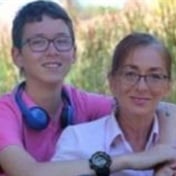Cancer is one of the most feared diseases on the planet, but medical science is slowly conquering cancer, according to an assessment of cancer trends produced by the US National Cancer Institute in conjunction with the US Centers for Disease Control and Prevention, the American Cancer Society and the North American Association of Central Cancer Registries.
Death rates and diagnosis rates from all cancers combined are declining significantly, both for men and women overall, and for most racial and ethnic populations within the US, the report found.
New diagnoses for all types of cancer combined decreased an average of almost 1% a year from 1999 to 2006, and deaths attributed to cancer decreased 1.6% a year from 2001 to 2006, according to the report, an annual evaluation released each December.
Doctors predict that the rates will keep falling because research has begun unlocking the secrets of how different cancers begin and develop.
"We're beginning to understand that each cancer has an individual pathway to development," said Dr Alan G. Thorson, president of the American Cancer Society, a clinical professor of surgery and director of colon and rectal surgery at Creighton University in Omaha, Neb.
"We know now how to look at cancer, find its source and go for that source, which makes all the difference in the world."
Detection and treatment
The decrease in cancer incidence and deaths has been driven mainly by advances in detecting and treating the major types of cancer in men and women, according to the report.
Incidence and death rates are declining for lung, prostate and colorectal cancer in men, and for breast and colorectal cancer in women, the report said. Also, increases in the other major cancer for women, lung cancer, have tapered off, with rates remaining stable since 2003.
There's no single explanation for the decrease in these major cancers, doctors said. Rather, the decreases are chalked up to effective detection and treatment tools designed for each form of cancer.
For example, public tobacco policy has been crucial in reducing lung cancer rates in men and leveling them out for women, said Dr Brenda Edwards, associate director of the Surveillance Research Programme at the US National Cancer Institute.
"The biggest risk factor for lung cancer is smoking," Edwards said. "We've begun to see the impact of efforts to limit tobacco use."
She noted that the reduction in smoking rates has accompanied laws designed to prohibit public smoking.
Mammograms, colonoscopies, less HRT
Colorectal cancer has decreased because of increased efforts to screen for the cancer using colonoscopy and other methods, Thorson said. Colonoscopy has made colorectal cancer completely preventable, he explained, because doctors can remove precancerous polyps from the colon during the procedure.
A number of factors account for the decrease in breast cancer rates. Mammograms are providing earlier detection of breast cancers, and earlier detection most often results in more successful treatment, Thorson said.
On top of that, fewer women are using hormone replacement medications after menopause, and "the sudden shift away from hormone replacement therapies in women affected incidence rates," Edwards said.
Prostate cancer rates have fallen as the result of improved detection through the use of tests that measure the level of prostate-specific antigen (PSA) in a man's blood, which can indicate cancer likelihood, and improved treatment procedures, Edwards said.
Both Edwards and Thorson believe the key to keeping cancer in decline involves molecular and genetic research that is unlocking the way cancer cells function.
Better understanding
"We're beginning to understand what's going wrong inside of the cells to make them behave in a bad manner," Thorson said. This type of research will result in targeted therapies that will attack cancer cells while leaving healthy cells alone, he said.
Increased understanding of the human genome also will help in cancer prevention, Thorson said. Using knowledge of the genetics of cancer, doctors might soon be able to identify people who are at high risk for certain types of cancer and provide them with the tools to prevent its occurrence.
Other breakthroughs along the way also should help. For example, doctors are using vaccines to prevent the occurrence of cervical cancer in women and are researching ways other vaccines might stop other forms of cancer.
But Thorson said the biggest breakthroughs in cancer prevention could be ones that people undertake in their everyday lives. If people begin eating right, exercising and avoiding bad habits such as smoking, then cancer rates will continue to fall, he explained.
"We have the ability to significantly reduce cancer available right now," Thorson said. "Those are things we can do to prevent cancer, which is infinitely better than creating new ways to treat cancer once it's there."
"People forget how much power we do have right now through simple lifestyle changes," he added. (September 2010)
(Copyright © 2010 HealthDay. All rights reserved.)




 Publications
Publications
 Partners
Partners















